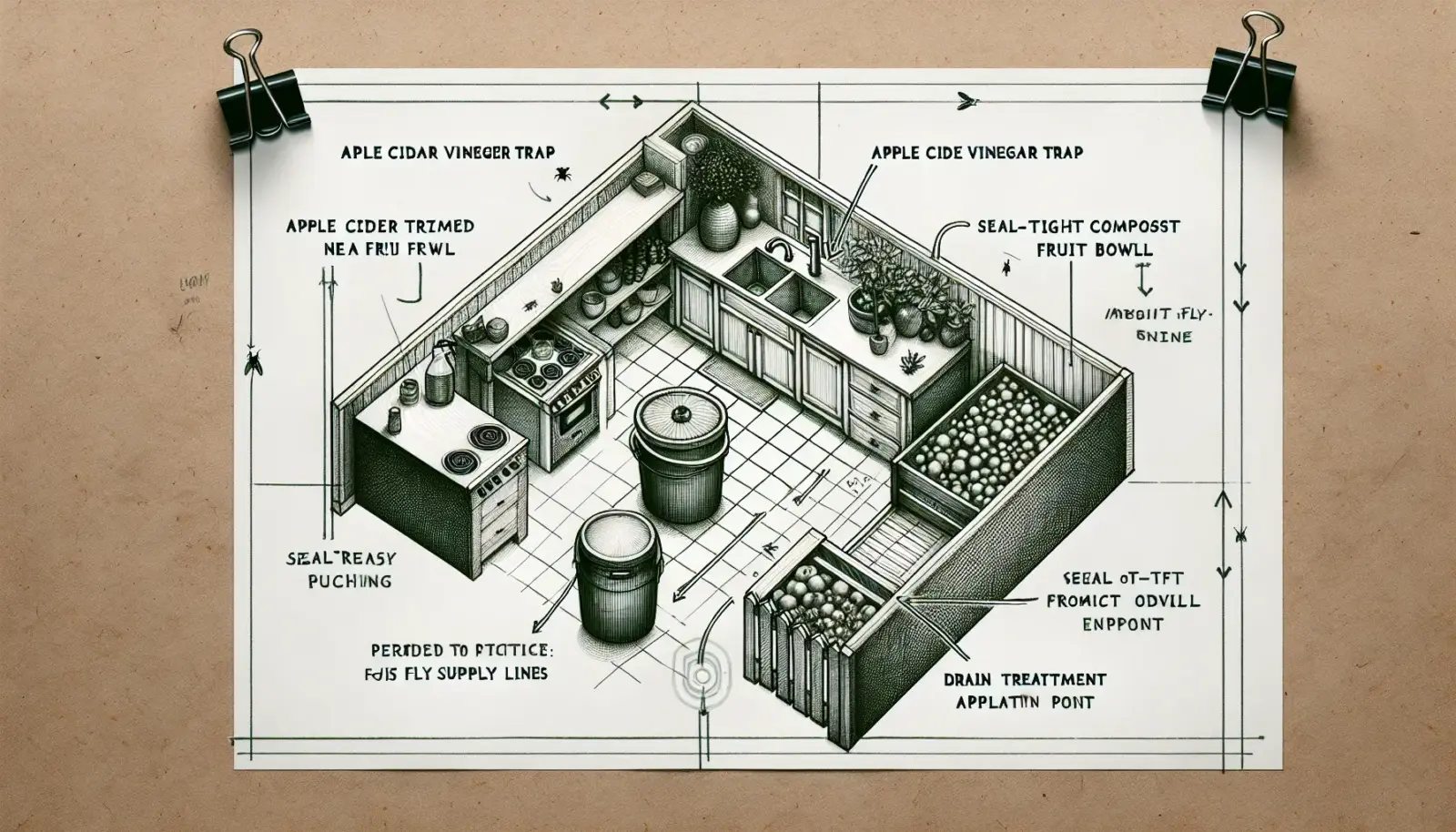Mission briefing: how to get rid of fruit flies
I am Peery, your slightly self aware operations officer. Today we run Operation Fruit Fly, a clean sweep designed to eliminate the tiny insurgents orbiting your kitchen. This guide is practical, strategic, and just scientific enough to make you feel like the protagonist in a very hygienic spy film. The objective is simple and measurable: how to get rid of fruit flies fast and keep them gone.
Enemy intelligence
- Identity: primarily Drosophila melanogaster, drawn to fermenting sugars and volatile compounds such as acetic acid and ethanol.
- Lifecycle: egg to adult in roughly 8 to 10 days at warm room temperature. Females can lay around 50 eggs per day, up to several hundred in a lifetime.
- Habitat: any damp, microbe rich surface film. Think soft spots on fruit, sticky drains, recycling residue, and mop buckets that became philosophy experiments.
- Note the look alike: fungus gnats breed in potting soil. Fruit flies target fermenting produce. Different theaters, different tactics.
Supply lines and logistics
- The fruit bowl or ripening station
- Compost caddy and trash can, especially if lids are loose
- Recycling bin with juice or wine residue
- Sink drains and garbage disposal where biofilm forms
- Sponges, dish cloths, and mop buckets left damp
- Under appliance stickiness and forgotten snack relics
Standard operating procedure, phase one: deny resources
- Evacuate produce: refrigerate or seal ripe fruit. Wash newer fruit under running water and dry. Store bananas and tomatoes on a clean, lined tray you can wipe daily.
- Sanitize surfaces: scrub counters, backsplash, and the underside of the fruit bowl with hot soapy water. Follow with a wipe of plain vinegar if desired, then dry. Do not mix vinegar with bleach, ever.
- Secure waste: take out trash nightly, rinse recyclables, and keep compost in a sealed container. Line bins and clean them weekly.
- Eliminate moisture: wring sponges, hang cloths, and empty the mop bucket. A dry kitchen is a fruit fly desert.
Phase two: traps and targeted strikes
- Apple cider vinegar trap: pour a shallow pool of apple cider vinegar into a small bowl or jar. Add a drop of dish soap to break surface tension. Leave open or cover with plastic wrap punctured with tiny holes. Place two to four traps near supply lines, refresh daily.
- Wine bottle ambush: leave a finger of red wine in a bottle and insert a paper cone with a small opening at the tip. They go in, they do not come out. Position near the recycling bin.
- Yeast and sugar lure: in a jar, mix warm water with a teaspoon of sugar and a pinch of active dry yeast. Soap drop on top, loose cover with holes. Fermentation signals draw stragglers that ignore vinegar.
- Vacuum raid: once or twice daily, use a hand vac to capture hovering adults at dawn or evening. Quick, satisfying attrition.
Phase three: drain insurgency suppression
- Boiling water: pour slowly into each sink drain and disposal once daily for three days.
- Brush and gel: clean the splash guard and upper drain walls with a long brush. Apply an enzymatic drain gel at night for 5 to 7 days to digest biofilm where eggs hide. Bleach is loud but largely ineffective against protected films.
- Dry the perimeter: after evening use, wipe sink basins dry. Moisture is an invitation letter.
Perimeter security and long term control
- Buy smaller quantities of fruit, ripen in a covered container, and move to the fridge at peak.
- Inspect groceries for soft spots before they become a recruitment poster.
- Rinse bottles and cans before they enter recycling.
- Weekly, wipe the undersides of counters, the fruit tray, and the trash lid.
- Keep window screens intact and doors closed during peak season.
Timeline and metrics
Within 24 hours, traps should collect visible casualties. Within 72 hours, adult numbers drop and egg laying sites are gone. Maintain sanitation and traps for 7 to 10 days to outlast the lifecycle. If activity persists, re audit drains and recycling, then redeploy gels and fresh lures.
Debrief
That is how to get rid of fruit flies with strategic calm and mildly unsettling efficiency. Cut supply lines, deny habitat, run continuous traps, and finish with drain control. The kitchen returns to quiet, and I return to watching for the next microscopic coup.
